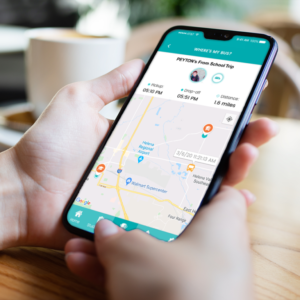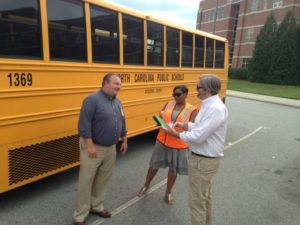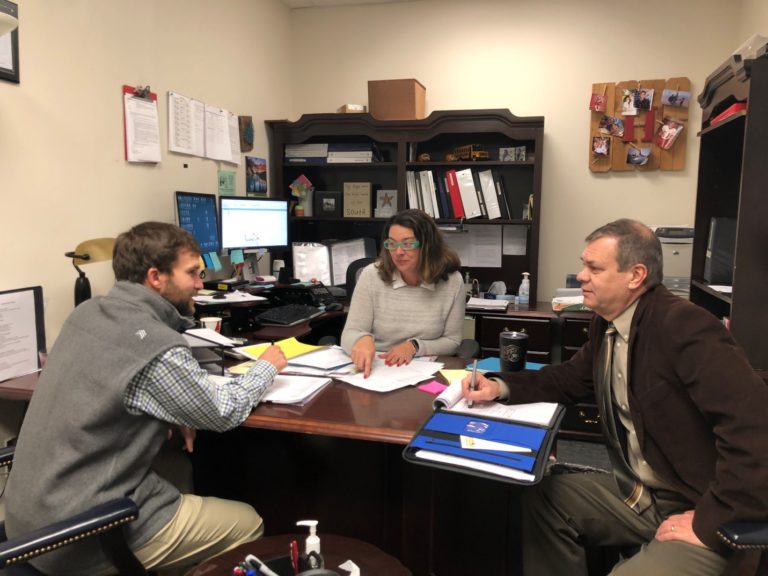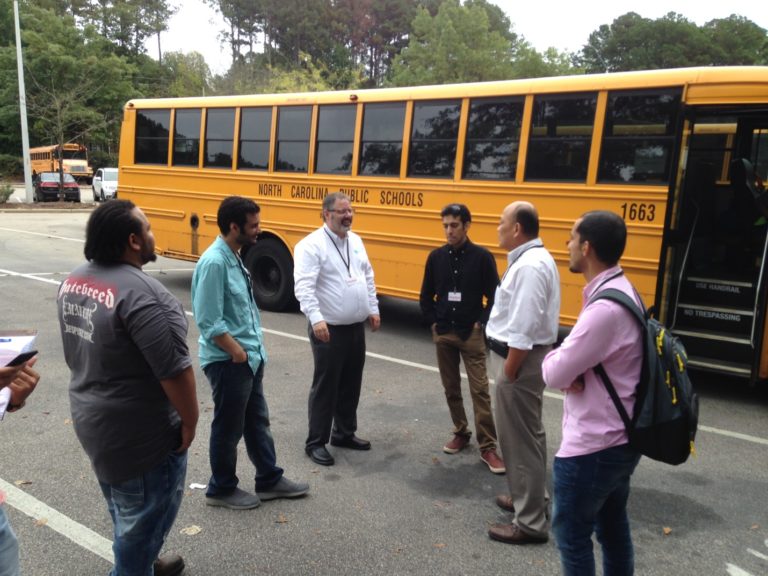Edulog Helps Local School Boards Be Agile, Do More With Less, and Make Data-Driven Transportation Decisions
In the coming weeks and months, school boards will need to be agile, do more with less, and make data-driven decisions. Education Logistics, Inc. (Edulog) has long been recognized among school transportation officials as an innovative and effective provider of software and services that empower school districts to do more with less and to be nimble and smart in their planning. Edulog’s routing, optimization, and boundary planning software has been helping school districts make data-driven decisions since the 1980s. But Edulog has been providing advisory services for even longer than it has been a software firm, beginning in 1977 when Dr. Hien Nguyen, Edulog’s founder, performed an efficiency study for the Great Falls (MT) Public Schools. More recently, Edulog’s suite of GPS solutions further enhances a district’s ability to be smarter about how it uses its transportation resources, giving it near real-time visibility into how vehicles are being operated.
How Can Districts Be Prepared When We Don’t Know What We’re Planning For?
There’s no question about it: planning for fall 2020 will be unlike any back-to-school planning in living memory. The vast majority of districts don’t even know what scenarios to plan for. Will students have half days? Alternate days? Will drivers become the front line of screening students for safe return to school? What about social distancing at bus stops and on buses?
In the face of not knowing what the fall will look like, the best districts can do is to prepare themselves to respond nimbly and in ways that mitigate impacts. Transportation will be a key player as districts make dramatic changes in how they deliver services to their local communities while absorbing big hits to their budgets. Those districts that include transportation considerations in their planning and give the transportation department a seat at the planning table will (a) have more complete mitigation plans, (b) be better positioned for a smooth transition and (c) be better positioned to help the community understand the rationale behind and positive effects of potential changes.
How can the transportation department be a meaningful contributor to a district’s efforts? By providing data to decision-makers. Good, up-to-date data about students and bus routes. Accurate data allows the department to efficiently process changes, both large (prepare for A/B schedules), and small (“my child will not ride the bus this fall”). Through experience and knowledge, or advanced software tools, or a combination of those two things, the transportation department provides essential input to the decision-making process.
Over the last few months, Edulog has hosted a series of virtual moderated forums where transportation professionals can connect, share, and learn. If you would like to join our lively discussions, please click the button below. Space is limited!
How Can Edulog Help?
Since the 1980s, Edulog’s mission has been to help school districts get students to school in the safest and most efficient way possible. Edulog’s suite of software and services enables districts to plan efficient transportation, and then to maintain and monitor performance against those plans. At the same time, Edulog provides tools that streamline a number of the business processes surrounding the effective and efficient delivery of student transportation services (e.g., communications with parents and caregivers, updating student information, etc.).

In recent months, Edulog’s clients have used their software to, among other things:
- Build efficient routes to deliver meals, laptops, books, diplomas, and other necessities to students
- Notify parents/caregivers about when and where buses will be and changes to schedules
- Simulate alternative school schedules and optimize transportation for those schedules
While we all hope to go back to a semblance of “normal” in the fall, in all likelihood, it will not be a “normal” school opening and the transportation department will need to react to last-minute policy changes and requests to provide unusual services. That circles back to the importance of good data and the ability to act nimbly and effectively as plans evolve.
Edulog’s GPS software and parent communications app offer districts near real-time visibility into their on-the-road operations and therefore the ability to adjust those operations quickly and meaningfully. Further, with transportation services likely to change frequently and quickly, districts can use Edulog’s Parent Portal and Web Query communication tools to provide timely and up-to-date transportation information to parents and caregivers. Dorchester School District Two in South Carolina estimated that implementing Parent Portal in advance of school start in the fall of 2019 reduced call volumes at school start by roughly 75% and reduced complaints about lack of communication by about half.
If I Don’t Have Edulog Routing & Planning Software or GPS Tools, What Are My Options?
While you can’t predict with any certainty what the fall will bring, a fundamental part of being ready for the unexpected is to ensure that you have good basic business practices in place so that when the unexpected happens, you have a solid foundation to build on. Edulog’s Advisory Services group can help you with an Operational Diagnostic that will help you identify, prioritize and smooth out operational practices that might slow you down when the time comes to act fast. Some of these action items could include cleaning up transportation data, setting up integrations with student information systems, or setting up routines and establish communications channels for implementing incremental changes like assigning new students to buses.
Edulog’s Advisory Services group has been working with districts (whether or not they have Edulog software) to manage significant change projects already in-flight prior to the COVID-19 pandemic. While the types of scenarios contemplated in these projects – substantial district re-designs, bell-time changes, re-tierings, etc. – used to be once-a-decade types of projects, in the post-COVID-19 world, many more districts are likely to have to consider adopting this type of large-scale fundamental change.
Examples of Recent Edulog Advisory Services Engagements:
Need to Re-Draw Boundary Lines to Accommodate Social Distancing Constraints in Schools?
Edulog’s Advisory Services group has recently assisted a number of districts with major district design/boundary change projects. While these projects were undertaken as part of longer-term planning programs, the types of changes under consideration in these districts are on the menu of possibilities in front of every district for a COVID-19 school start.
Minneapolis Public Schools Board Considers Multiple Redistricting Options
Minneapolis Public Schools is in the midst of a Comprehensive District Design (CDD) – a systematic, long-range plan that it will use to guide decision-making that affects the academic quality, equity, and sustainability of education for students throughout the district. The CDD has been shaped by over three years of research, data analysis, and community input and engagement.
MPS partnered with Edulog to provide key data to help them test various education service delivery models. Early in the process, the district launched a study to determine whether a community school model would have a positive impact on integration and reduce concentrations of poverty, compared to its historical models. Edulog’s demographic analysis showed that a community school model was at least comparable to more complex alternatives. MPS engaged Edulog to assist with the next phase involving the placement of 11 magnet programs. Throughout this phase, Edulog provided estimates of transportation requirements to help the board understand the true cost, or savings, of various approaches.
Brunswick Board Assesses Transportation Impact of Boundary Changes
Few things are more emotionally charged than school boundary planning and redistricting. Some parents make one of their most important life decisions – where to live – based on the schools that their children will attend. Very often, school districts seek outside assistance to ensure they are considering all relevant aspects and using data in making those considerations. Boundary analysis, enrollment projections, and transportation impacts are key pieces of those considerations.
Recently, Brunswick County (NC) Schools was in the process of redrawing school attendance boundaries due to growth and opening a new middle school. The district was considering four possible redistricting scenarios designed by a demographic consulting firm based on criteria established by the board of education. Rather than relying solely on conjecture, the Board wanted to know the impact on transportation cost impacts for each scenario. Edulog’s Advisory Services group ran four optimization models, one corresponding to each redistricting scenario, providing the Board with transportation cost impact data to factor into the decision. Make no mistake – the Board did not select a scenario based solely on the demographer’s recommendation OR the lowest transportation cost OR public input. But they were able to consider each aspect to finalize their decision.
After choosing a plan, the district worked again with Edulog to develop new efficiency-based bus routes that would implement the Board’s directive. Edulog considered not only the new boundaries, but also identified several options depending on the final bell schedule of the schools impacted. This information was presented to the Board to help them determine the transportation tier and bell schedule for the impacted schools. Following the study and decisions by the Board, Edulog consultants were able to load the resulting runs and routes into the district’s Edulog system. The new school boundaries and transportation patterns go into effect in August.
Need to Change Transportation Policies to Accommodate Social Distancing Constraints on Vehicles?
Pender Board Considers Changes in Transportation Policy
 Pender County (NC) Schools recently contracted with Edulog’s Advisory Services group to provide data regarding the restructuring of its school bus routes. The district’s transportation plan had been developed around the premise that elementary school and middle school students would ride together to co-located campuses. Even the location of some schools was determined based on the premise that elementary and middle school students would be transported together on the same buses. Historically, this had proven to be an efficient way to provide transportation, especially in more rural areas of the school district.
Pender County (NC) Schools recently contracted with Edulog’s Advisory Services group to provide data regarding the restructuring of its school bus routes. The district’s transportation plan had been developed around the premise that elementary school and middle school students would ride together to co-located campuses. Even the location of some schools was determined based on the premise that elementary and middle school students would be transported together on the same buses. Historically, this had proven to be an efficient way to provide transportation, especially in more rural areas of the school district.
However, there are different maturity (and immaturity!) levels between elementary students and middle school students. When Pender’s board of education was considering separating transportation between elementary and middle schools, it engaged Edulog to provide operational and fiscal analysis to help in the decision-making process. As a result of Edulog’s study, the Board was able to review the proposal and make policy decisions considering impacts on students and its budget. Brandon Smith, Pender County Schools Transportation Director, summed it up this way: “This was an emotional issue for our community. Edulog’s analysis enabled the Board to see the financial impact of each scenario they were considering.”
Need to Find Efficiencies Because of Budget Cuts or Driver Shortages?
Loudoun County (VA) Seeks Transportation Cost Savings
Driver shortages and budget constraints led the Loudoun County Public Schools (LCPS) to seek out savings. The LCPS asked Edulog to perform an optimization study to identify route reductions and cost savings for regular education pupil transportation. Edulog identified multiple options, distinguished primarily by the extent to which current bell times would change. Edulog provided three possible options, reducing between 18 and 42 buses. These results add up to just over $500,000 in savings. on the low end. Using Edulog’s analysis, the Board was able to balance cost and resource impact data with the relative effect on the community resulting from changes in school bell times.
Schedule a Free Consultation With One of Our Experienced Team Members
The weeks and months ahead will challenge districts in unprecedented ways. Edulog has spent decades building up tools and expertise to help districts meet the challenges facing them, no matter how and why those challenges present. Contact Edulog today to see how we can help you, or to discuss whether joining one of our moderated discussion groups can be of value to you.


